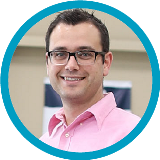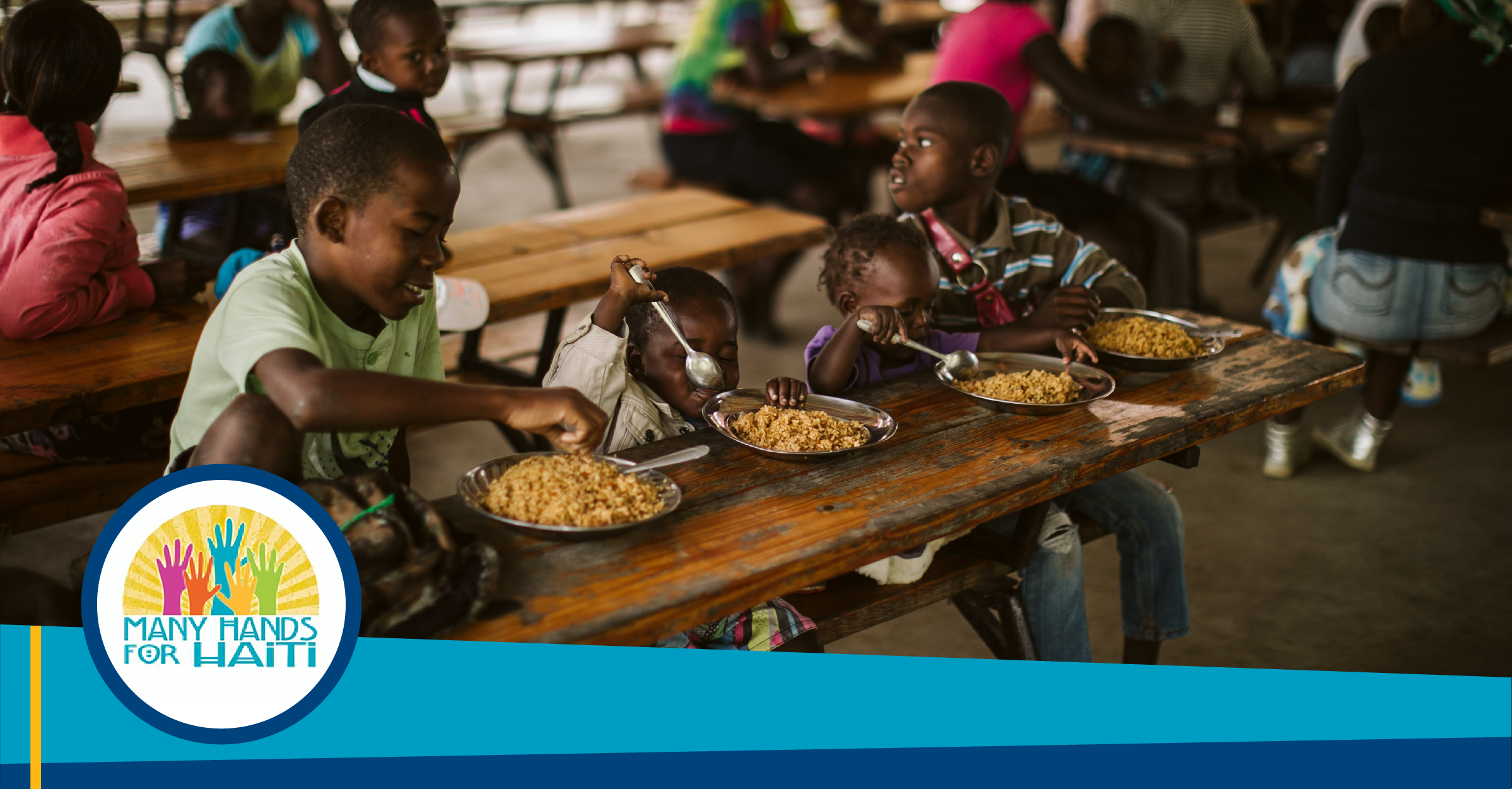Advancing Collaboration with Many Hands for Haiti
About the Organization
In 2009, Many Hands for Haiti (MH4H) became an official 501(c)3 organization. We envision a world where people transform together, through the presence of Jesus Christ, to be called people, living with purpose, unleashing God-given talents and resources to bring Good News in a broken world.

Featured Guest:
Rob Van Beek,
Marketing Manager
Many Hands for Haiti
Approach to Collaboration
Our work focuses on six key areas of transformation: education, agronomy, leadership development, building safe homes, and medical assistance. As these communities develop, an outcome that’s in part achieved through collaboration, there’s an economic development that occurs.
In Haiti, we run our love and action programs that strive to strengthen families. We operate under a philosophy of transforming together. That’s why our vision statement is transforming together to do love and action in a broken world and our goal is to come together to get the best results that we can.
When we think about collaboration, our work doesn’t only occur in Haiti. We believe in local missions and being present here in the United States. That’s why we operate and run thrift stores, with the goal of not only promoting our organization but also bringing people together.
Application of the 9 Considerations for Collaboration
Build Trust
We begin all our collaborations by building trust. When we opened our second campus in January of 2019, we knew that we couldn’t step into a new community to showcase our programs without gaining trust first.
To build trust, we first let the people know we were there for the long haul and not just to implement programs and feel good about ourselves. We were very intentional about this. We spent a year meeting with local families and leaders in the area, getting to know them and better understanding their needs. They needed to know they could trust us and that we couldn’t move forward without them
Also, we strongly believe that trust comes hand in hand with the notion of transforming together. That is why we don’t live in a gated and inaccessible compound. Instead, our staff lives alongside the people in Haiti. Our community meetings are led by American and Haitian staff and we collaborate. All of these steps are taken with the goal of bringing the community together.
Have a Vision
We believe it is critical to have a laser-like focus in what we are doing. Our long-term goal is to expand our centers, establishing strong programs to give families a firm-foundation. In the next ten years, our vision is to have ten of these centers. Through this, we want to build a network that enables us to distribute more resources to these communities while expanding our footprint and care. We keep this vision in mind every time we make a decision or plan. Without a vision to look to, we lose our focus.
Seek to Assure the Success of Your Collaborators
Our philosophy of transforming together runs through everything we do. This holds true in our communities in Haiti and our relationship with our collaborators. When we work with partners, we are transparent about our needs and are intentional on making sure there’s a mutual benefit. In our experience, taking this approach almost always strengthens us and our partners.
Take Stock
Over the years, our programs have seen major changes. We’ve learned to take a step back and collaborate with others who have the resources and expertise. Along the way, we’ve found several ways to leverage other people’s expertise and find ways to partner with others.
One of our programs entails helping kids get to school while providing food, education, and resources. We quickly realized that these children were malnourished and, even with our support, still didn’t have the energy or capacity to be ready for school. Seeing this, we shifted from focusing on school-aged children to running programs that supported and strengthened these families enough to be prepared for an education. Since we made the shift, we’ve seen phenomenal results – kids graduating out of our programs are a year ahead of any other children coming into school for their age group. We partake in the credit humbly knowing we’ve learned from our experiences and wouldn’t have achieved our goal if we didn’t take stock.
Start Small
We started with 30 children in our programs in 2015. Once we shifted our focus and made changes, we’ve grown to 177 families in our programs. We were intentional about this ‘smaller start’ because we wanted to ensure that we could see where we needed to improve, making adjustments to better support the families we serve.
As part of our family-focused programs, we also have goat programs. These goats are used by families to invest in their children’s future education. To make these goat programs a reality, we collaborated with local Haitians and other nonprofits for their expertise on how to train, breed, and distribute goats to families in our community. We now have 170 pregnant goats that we’ve distributed, and about 121 additional goats that we’ve been able to breed. We wouldn’t be where we are without collaboration.
Fail Fast, and Build Rigorous Feedback Loops
In Haiti, literacy is a pressing issue. We estimate up to 80% of people don’t know how to read or write. To help address this, we began literacy programs with a solid curriculum and schedule. However, we quickly discovered that there were people at different levels, all learning in different ways. To us, the initial concept was akin to a feeding program that fed one meal for everybody. The approach didn’t translate well when applied to education. So, we recognized the barrier and pulled back, knowing that our resources could be better used elsewhere until we were better equipped to meet the need.
Take a Portfolio Approach
We’ve developed a vast network of people that we can collaborate with and approach. We operate impact trips to Haiti where we bring teams over into the country, and we find a lot of churches who want to go and serve. We’ve had several churches who collaborated on other projects because we brought them together in Haiti.
In our work, we foster trust and allow them to see their part in terms of impact. We build a portfolio of collaborators and find a way for them to work together; there’s a beauty in the way people can participate in that connection.
Consider Non-traditional Partners
We have a Bundled Bottoms program where we employ Haitians to create diapers that go out to our families, and the diapers help prevent many diseases in the home for mothers and children. When we started, we were doing it ourselves, but people caught on and asked if they could participate. We’ve had printing manufacturers who found out about this program and asked if they could donate their excess materials instead of letting them sit for months. Through a program like Bundle Bottoms, we’ve been able to approach unique, different partners who can resource materials and participate in the mission.
What is interesting is how this program and the connected partnerships have transformed through the current global pandemic. When the need arose for masks in Haiti, especially for those who could not afford them, we were able to mobilize. We enlisted the help of the Haitians we had trained to make diapers, training them again on how to create masks. We then shifted our focus from collecting diaper materials to collecting mask materials that we couldn’t purchase locally in Haiti. Through this effort we were able to create and distribute 1,500 masks to vulnerable families in our community. We could never have done this without the partnerships and relationships we developed!
Keep Your Donors Apprised of Your Collaborations
We operate our thrift stores to foster local community connections, but we also donate a percentage of our funds from the thrift stores to a nonprofit in the community each month. For instance, at one store, we hold what we call a “Give Local” event, where people can shop on a Saturday and know that 10% of proceeds from that day will be donated to a local nonprofit. The nonprofit can also come into our store, and their volunteers can talk to people about their work. The events are opportunities for us to be somewhat of a community billboard for what’s happening locally. The response from the general public has been very positive, enabling us to engage and share our story.
Future Collaborations
Right now, our ideal collaboration would be with somebody who could help resource, develop, and/or collaborate to expand our agronomy programs. One of our main outcomes through our Love in Action programs is to enable families to feed themselves permanently. Finding an agricultural-based partner with the expertise and the willingness to come to Haiti and support us in this effort would be monumental. The other ideal collaboration would be with someone with medical expertise who can help expand our First 1,000 Days program in Haiti. We strongly believe in working with vulnerable women in these communities. Having a partner in this effort would further strengthen so many families where we serve.
This article was composed by Rachel Romana Liu.

